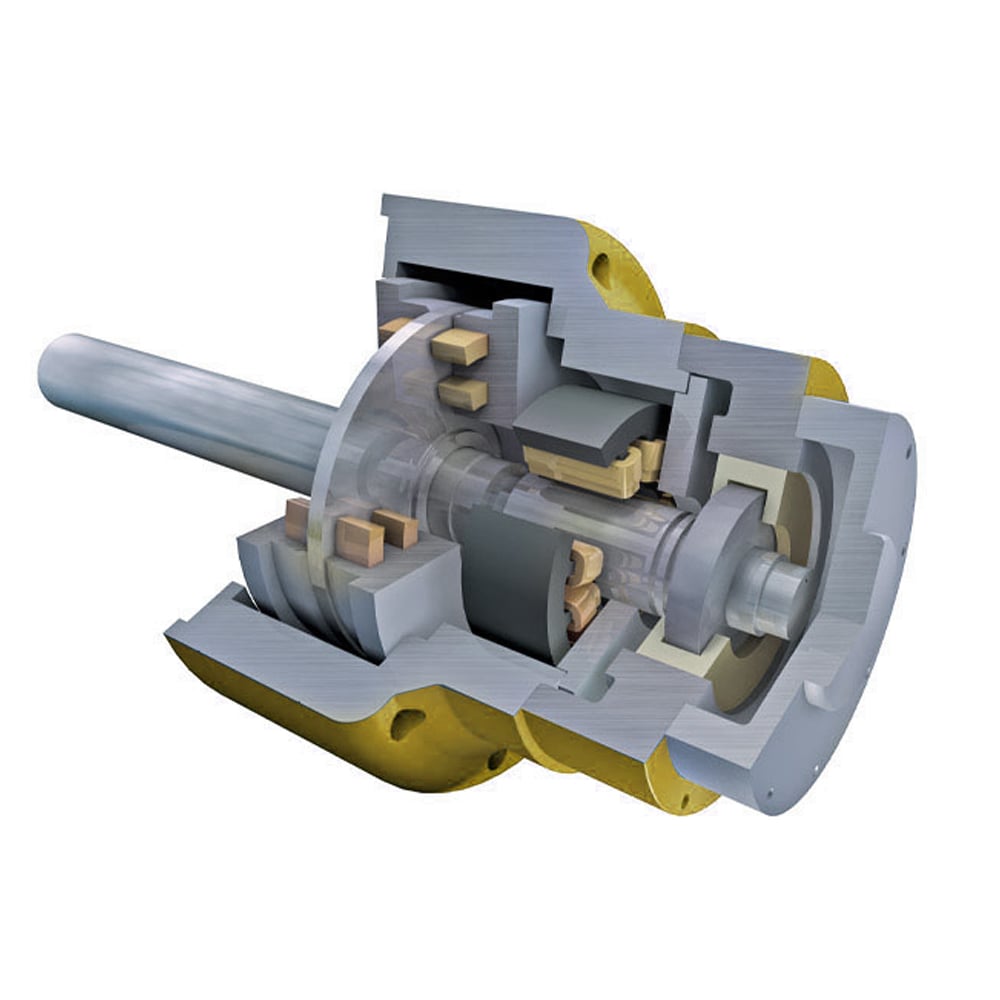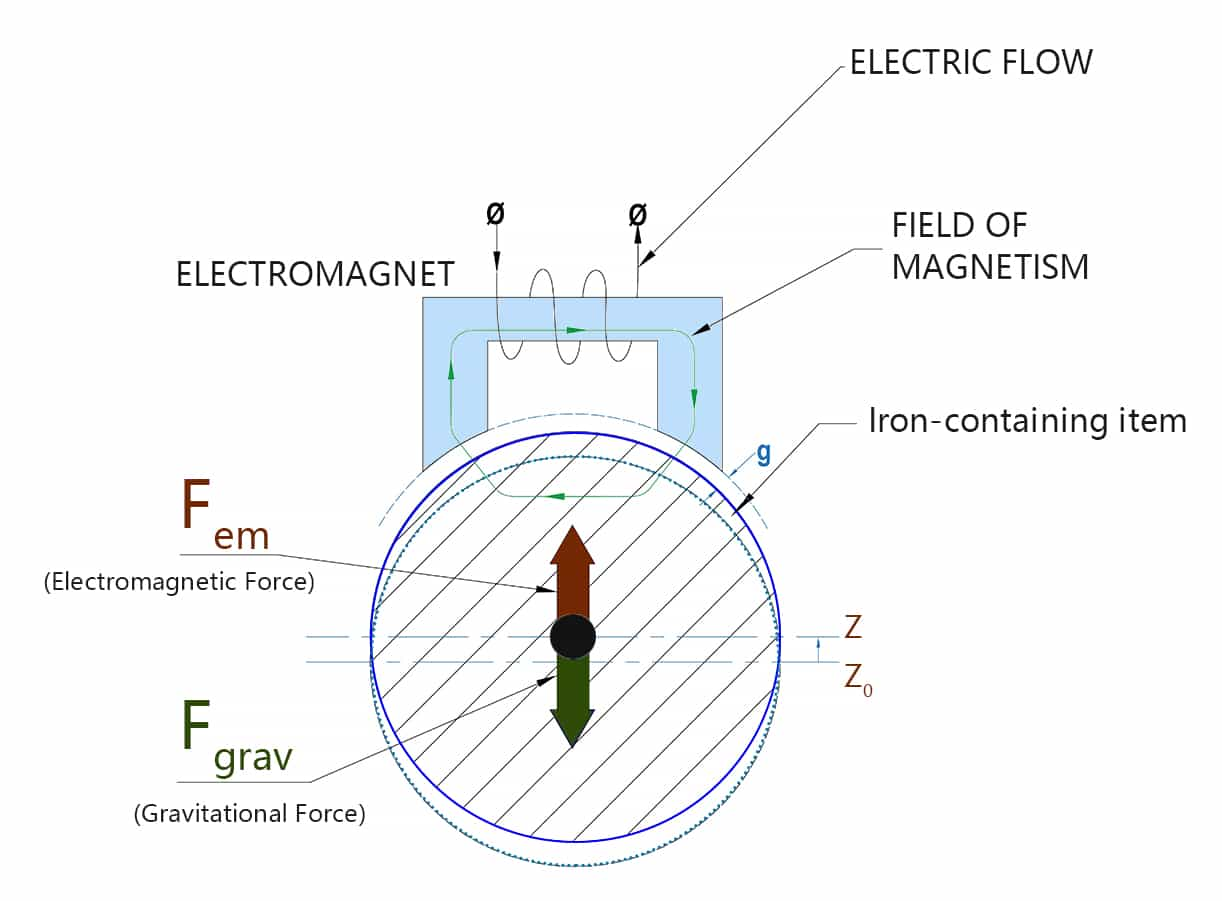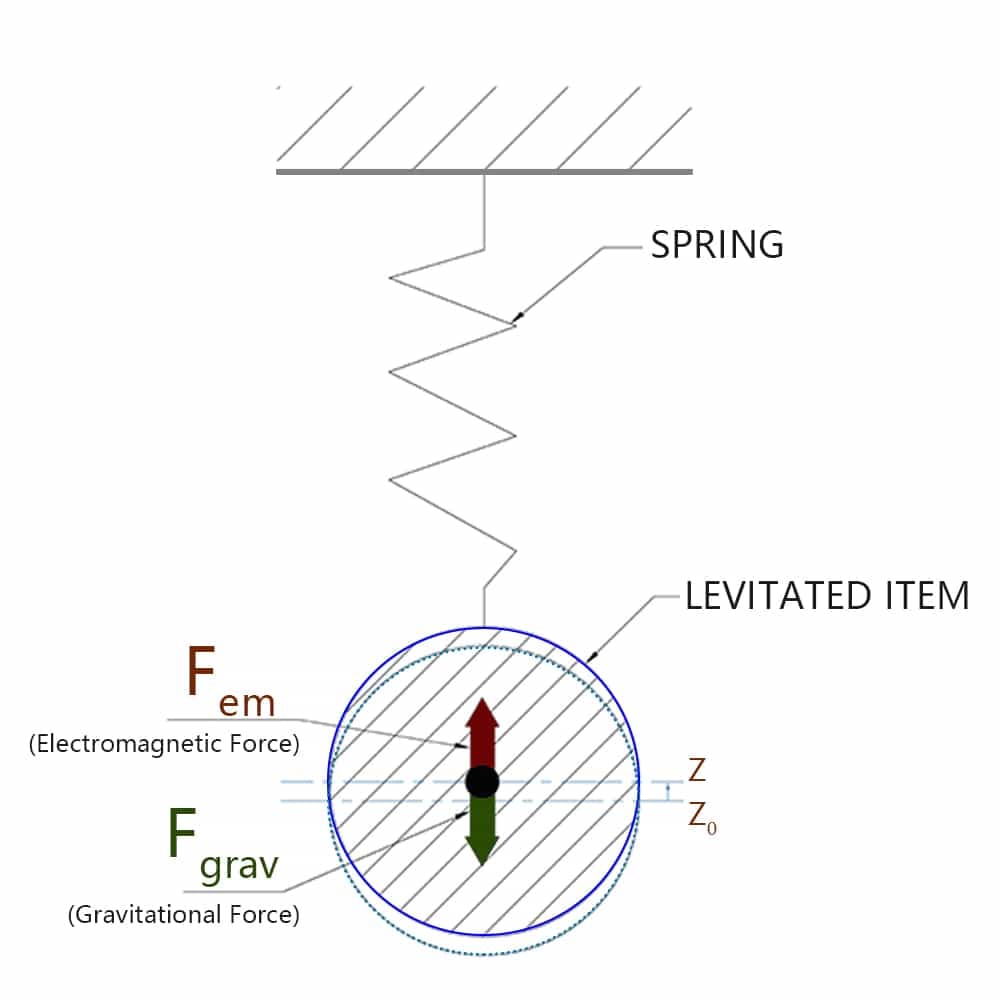Magnetic Bearings: What They Are & How They Work
In the realm of industrial machinery, the pursuit of efficiency and longevity is constant. Magnetic bearings emerge as a cutting-edge alternative to traditional mechanical bearings, offering a frictionless interaction between moving parts. This blog delves into the world of magnetic_bearing systems, illuminating their mechanism, advantages, and applications.

What Is a Magnetic Bearing?
A magnetic bearing is an advanced type of bearing that uses magnetic fields to levitate and stabilize a rotating shaft without direct contact.
Magnetic bearings can handle incredibly high speeds, more than any other bearings, and there's no limit to how fast they can go.
This technology employs electromagnetic forces to provide a contact-free operation, thus eliminating mechanical friction and the need for oil-free lubrication. Such technology is pivotal in permanent magnet motors, which are integral in applications demanding high efficiency and precise control.
Components of A Magnetic Bearing
A magnetic bearing consists of several key components working together:
- Electromagnets: Generate the magnetic field that lifts and stabilizes the rotor.
- Sensors: Track the rotor's position to help adjust the magnetic field accurately.
- Control System: A closed-loop amplifier system uses data from position sensors to regulate the electromagnet strength, ensuring the rotor's stable and smooth spin.
- Rotor: It is the part that moves and is kept floating by magnetic forces. It is often an integral component of electric motors and flywheel energy storage systems.
- Stator: The non-moving part that holds the electromagnets and sensors.
- Auxiliary Bearings: Often axial magnetic bearings act as a safety net during power loss or issues, ensuring the rotor stops without damage.
Together, these parts keep the rotor floating and spinning without any contact, eliminating bearing friction.
Types of Magnetic Bearings
Active Magnetic Bearings (AMBs)
Active Magnetic Bearings employ electromagnets and a control system to keep the rotor stable while in motion. They use sensors to track the rotor's position and make necessary adjustments to the magnetic field.
This setup means there's no wear, very little friction, and they can automatically correct for any uneven distribution of weight. As a result, rotors can spin smoothly and with minimal vibration.
Passive Magnetic Bearings
Passive magnetic bearings rely on permanent magnets for stable levitation without external power or control systems.
They’re effective but can't adjust autonomously, making them less versatile than their active counterparts. Active magnetic bearings use electromagnets and require continuous power and a control system to maintain rotor stability.
For enhanced stability, designs often combine both types: permanent magnets bear the static load, while active bearings adjust when deviations occur. Typically, a backup bearing ensures safety if power or system failures arise.
How Magnetic Bearings Work
Active magnetic bearings (AMBs) are marvels of engineering that harness electromagnetic force to support and rotate objects without physical contact. They stand out as a sophisticated alternative to conventional mechanical bearings. Below, we unravel the mechanics behind these high-tech systems:
The Core Principle of AMBs
The core of an AMB system lies in the interplay between electromagnets and ferrous objects. Energizing an electromagnet generates magnetic flux. This magnetizing flux in turn creates an attractive pull on any nearby ferrous material, a force that grows stronger as the distance between them decreases and as the electric current increases. This principle is depicted in Figure 1, where you see the ferrous object drawn towards the powered electromagnet, a situation that’s common in magnetic bearing setups.

Figure 1: Electromagnetic Attraction in Magnetic Bearings
Magnetic Levitation in AMBs
Using this magnetic pull, AMBs can suspend a rotor without any contact. This levitation occurs when the magnetic force counteracts gravity. However, without regulation, this system could lead to the rotor sticking to the electromagnet, as the attraction strengthens when the gap narrows. This is where AMBs' 'negative stiffness' comes into play, the opposite of what you’d see with a spring system, as illustrated in Figure 2. The spring exerts a force that weakens as the object moves upwards, whereas the magnetic force strengthens as the object moves closer.

Figure 2: Spring Suspension in Mechanical Systems
Eddy Currents for Stabilization
To prevent contact and maintain levitation, AMBs generate eddy currents within the rotor. As the rotor moves through the magnetic field, these currents form and create opposing magnetic fields, stabilizing the rotor in a floating state, as per Lenz's Law. This interaction ensures the rotor acts as a 'magnetic mirror,' reflecting the magnetic force to stay levitated.
Achieving Equilibrium with Control Systems
Active magnetic bearings need precise control for stability, achieved through a system that continuously monitors the rotor's position via sensors and adjusts the electromagnetic force accordingly. This constant modulation ensures the rotor remains suspended, rotating with negligible friction and no wear. The result? An exceedingly precise, durable, and high-speed bearing system suitable for the most demanding applications.
In essence, AMBs offer a dynamic, wear-free solution for machinery, leveraging magnetic forces and intelligent controls for smooth operation. They embody the synergy of electromagnetism and modern engineering, pushing the boundaries of what's possible in rotational support systems.
Pros and Cons of Magnetic Bearings
Pros:
- Low Friction: Virtually eliminates friction, allowing for smooth operation.
- No Bearing Wear: No touching means no wear and tear..
- Maintenance-Free: Almost no need to fix or adjust.
- No Lubrication Required: Operates cleanly without oil or grease.
- High Speeds: Perfect for really fast turning parts.
Cons:
- High Initial Cost: Pricier to get than regular bearings.
- Power Dependence: Requires a continuous power supply.
- Complexity: Involves sophisticated control systems, needing specialized knowledge.
- Backup System Necessity: Must have a backup for when the power goes out.
Industrial Applications of Magnetic Bearings
Magnetic bearings find key applications in various sectors, such as:
- Turbines
- Power generation systems
- MRI machines
- Aerospace equipment
- Compressors and pumps
- Maglev trains
- High-speed blowers and electric motors
- Rotordynamic equipment used in hydrodynamic studies
Explore More with LILY Bearing
Dive into LILY Bearing's world beyond magnetic bearings! You can easily find various bearing options to meet all your axial and radial load requirements. These include ball bearings, roller bearings, turntables, thrust bearings, and specialty bearings such as stainless steel, ceramic, dental, and turbocharger bearings.
Need something unique? We also custom bearings tailored to Your exact needs.
Explore Our Products & Customize Your Solution - Discover precision, durability, and innovation with LILY Bearing, a toptier Chinese manufacture.
Keep Learning








